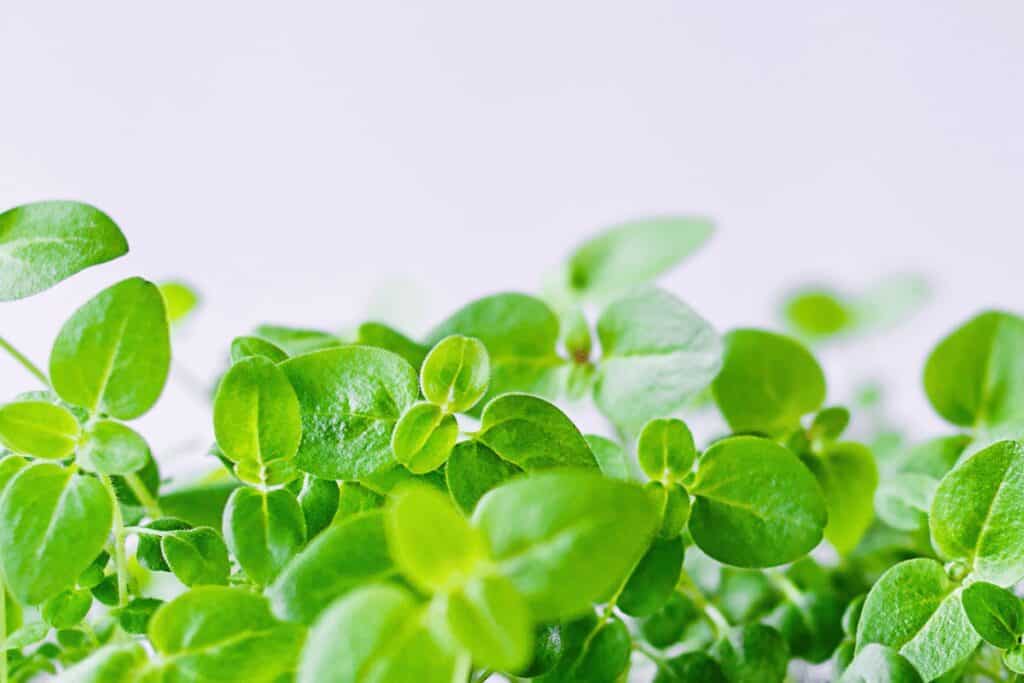Introduction
Microgreens have gained popularity in recent years due to their nutritional benefits and the ability to grow them easily at home. They are young, tender greens that are harvested just after sprouting. If you are looking to grow microgreens and want quick results, certain varieties are known to have a shorter growth cycle than others. In this article, we will explore which are the quickest microgreens to grow and provide step-by-step guidance on how to grow them successfully.
What are Microgreens?

Microgreens are edible greens that are harvested at an early stage of growth, usually within 10 to 14 days after germination. They are packed with nutrients, including vitamins, minerals, and antioxidants, making them a popular choice for health-conscious individuals. Microgreens come in a variety of flavors and colors, ranging from spicy arugula to vibrant radish greens.
Benefits of Growing Microgreens
Growing microgreens at home offer several benefits. Firstly, they provide a fresh and nutritious addition to meals, enhancing both the flavor and visual appeal of dishes. Secondly, microgreens can be grown year-round, regardless of the season, making them a convenient and cost-effective option for obtaining fresh greens. Lastly, cultivating microgreens is a rewarding experience that allows you to connect with nature and enjoy the satisfaction of growing your own food.
Factors to Consider When Choosing Microgreens
When selecting microgreens to grow, it’s important to consider a few factors. Firstly, choose varieties that suit your taste preferences, as different microgreens offer unique flavors. Secondly, take into account the growth cycle of the microgreens, especially if you want quick results. Lastly, consider the space available for growing microgreens, as some varieties require more room to spread out than others.
Quickest Microgreens to Grow
If you’re looking for the quickest microgreens to grow, consider the following varieties:
- Radish: Radish microgreens are known for their rapid growth and can be ready for harvest in as little as 7 to 10 days. They have a slightly spicy flavor and add a delightful crunch to salads and sandwiches.
- Broccoli: Broccoli microgreens are packed with nutrients and have a mild, slightly sweet taste. They typically reach harvestable size within 8 to 12 days, making them an excellent choice for quick growth.
- Kale: Kale microgreens are rich in vitamins and minerals, offering a boost of nutrition to your meals. They generally take around 10 to 14 days to reach maturity and have a slightly earthy flavor.
- Cabbage: Cabbage microgreens have a mild, cabbage-like taste and can be harvested within 8 to 12 days. They are versatile and can be used in salads, stir-fries, or as a garnish.
How to Grow Quickest Microgreens

To grow the quickest microgreens, follow these step-by-step instructions:
Step 1: Selecting the Right Seeds
Choose high-quality seeds specifically labeled for microgreen production. Consider the flavor, color, and growth cycle of the microgreens you wish to grow.
Step 2: Preparing the Growing Medium
Fill a shallow tray or container with a sterile growing medium, such as potting soil or coconut coir. Moisten the medium to provide adequate hydration for seed germination.
Step 3: Sowing the Seeds
Evenly spread the seeds over the prepared growing medium, ensuring they are not too crowded. Gently press the seeds into the soil to ensure good contact.
Step 4: Providing Optimal Growing Conditions
Place the tray in a well-lit area with indirect sunlight or under grow lights. Maintain a consistent temperature between 60-75°F (15-24°C) and provide sufficient air circulation.
Step 5: Harvesting Microgreens
Once the microgreens have developed their first true leaves and reached the desired height (usually 1-2 inches), they are ready for harvest. Use clean scissors to cut the microgreens just above the soil level.
Tips for Successful Microgreen Growth
- Water the microgreens regularly, keeping the soil moist but not waterlogged.
- Avoid over-seeding to prevent overcrowding and ensure proper air circulation.
- Monitor the growing environment for any signs of pests or diseases and take appropriate measures.
- Experiment with different varieties of microgreens to discover your favorites.
Conclusion ~ Which Are the Quickest Microgreens to Grow
Growing microgreens is a rewarding and accessible way to incorporate fresh, nutrient-rich greens into your diet. If you’re looking for quick results, consider growing radish, broccoli, kale, or cabbage microgreens. Follow the step-by-step instructions provided to ensure successful growth. Start your microgreen journey today and enjoy the flavors and health benefits they bring to your meals.
FAQs
Are microgreens the same as sprouts?
Microgreens and sprouts are similar in that they are both young greens, but they differ in their growing methods. Microgreens are grown in soil or a growing medium, while sprouts are grown in water without soil.
Can I reuse the growing medium for microgreens?
It is best to use the fresh growing medium for each batch of microgreens to prevent the risk of contamination and ensure optimal growth.
How do I store harvested microgreens?
After harvesting, gently wash the microgreens and remove any excess moisture. Store them in an airtight container lined with paper towels in the refrigerator. They can stay fresh for up to a week.
Can I grow microgreens indoors without sunlight?
Yes, you can grow microgreens indoors without direct sunlight. By using grow lights or placing them near a well-lit window, you can provide the necessary light for their growth.
Are microgreens more nutritious than mature greens?
Yes, microgreens are more concentrated in nutrients compared to their mature counterparts. They contain higher levels of vitamins, minerals, and antioxidants.




